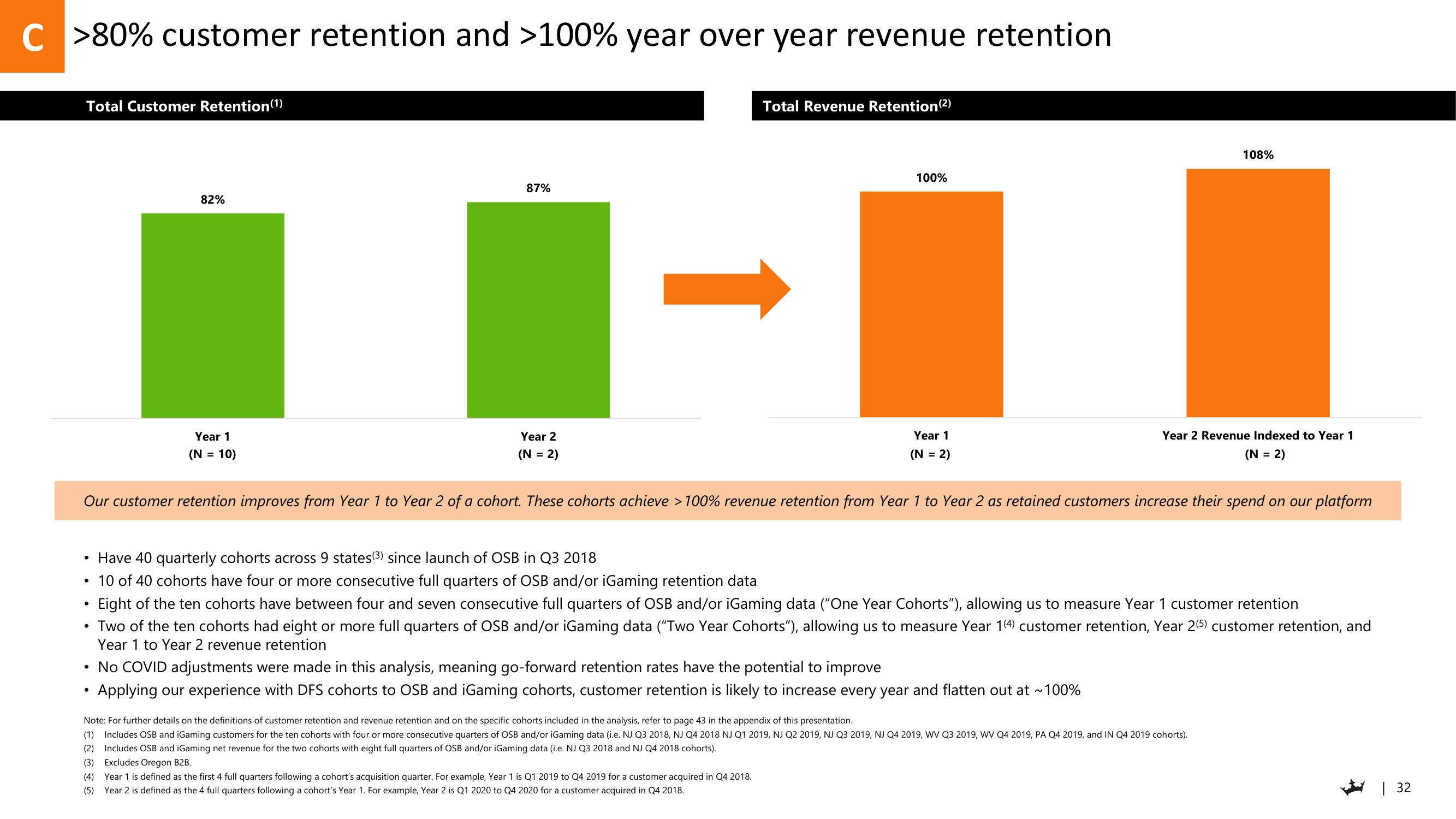DraftKings Investor Day Presentation Deck
C >80% customer retention and >100% year over year revenue retention
Total Customer Retention (1)
82%
●
Year 1
(N = 10)
●
87%
Year 2
(N = 2)
Total Revenue Retention (2)
100%
Year 1
(N = 2)
Our customer retention improves from Year 1 to Year 2 of a cohort. These cohorts achieve >100% revenue retention from Year 1 to Year 2 as retained customers increase their spend on our platform
Have 40 quarterly cohorts across 9 states (3) since launch of OSB in Q3 2018
• 10 of 40 cohorts have four or more consecutive full quarters of OSB and/or iGaming retention data
Eight of the ten cohorts have between four and seven consecutive full quarters of OSB and/or iGaming data ("One Year Cohorts"), allowing us to measure Year 1 customer retention
• Two of the ten cohorts had eight or more full quarters of OSB and/or iGaming data ("Two Year Cohorts"), allowing us to measure Year 1(4) customer retention, Year 2(5) customer retention, and
Year 1 to Year 2 revenue retention
108%
Year 2 Revenue Indexed to Year 1
(N = = 2)
• No COVID adjustments were made in this analysis, meaning go-forward retention rates have the potential to improve
• Applying our experience with DFS cohorts to OSB and iGaming cohorts, customer retention is likely to increase every year and flatten out at ~100%
Note: For further details on the definitions of customer retention and revenue retention and on the specific cohorts included in the analysis, refer to page 43 in the appendix of this presentation.
(1) Includes OSB and iGaming customers for the ten cohorts with four or more consecutive quarters of OSB and/or iGaming data (i.e. NJ Q3 2018, NJ Q4 2018 NJ Q1 2019, NJ Q2 2019, NJ Q3 2019, NJ Q4 2019, WV Q3 2019, WV Q4 2019, PA Q4 2019, and IN Q4 2019 cohorts).
(2) Includes OSB and iGaming net revenue for the two cohorts with eight full quarters of OSB and/or iGaming data (i.e. NJ Q3 2018 and NJ Q4 2018 cohorts).
(3) Excludes Oregon B2B.
(4) Year 1 is defined as the first 4 full quarters following a cohort's acquisition quarter. For example, Year 1 is Q1 2019 to Q4 2019 for a customer acquired in Q4 2018.
(5) Year 2 is defined as the 4 full quarters following a cohort's Year 1. For example, Year 2 is Q1 2020 to Q4 2020 for a customer acquired in Q4 2018.
| 32View entire presentation